That does make sense, thanks for your reply. I have something more to think about... haha
I also considered adding more corner-pieces (or; reflectors) on every corner on the horn path.
But I lack time to alter the plans, and besides that, I like the more simple construction and 'look' of the original. But more importantly, I am very curious about the sound of an tapped horn (never heard one before), and if I don't alter the design I could compare my opinion to other people that listened to the PAL12 (wich makes less sense since I am using a different woofer, but yeah, uhh, whatever haha)
Teun
I also considered adding more corner-pieces (or; reflectors) on every corner on the horn path.
But I lack time to alter the plans, and besides that, I like the more simple construction and 'look' of the original. But more importantly, I am very curious about the sound of an tapped horn (never heard one before), and if I don't alter the design I could compare my opinion to other people that listened to the PAL12 (wich makes less sense since I am using a different woofer, but yeah, uhh, whatever haha)
Teun
Don't add more reflectors.
Some bracing ran down the middle may help. But with a 13.5" internal width panel bracing isn't as critical as on a 22" internal width panel.
I think for what it is, the design is good as it stands. Add multiples if you want more output.
Some bracing ran down the middle may help. But with a 13.5" internal width panel bracing isn't as critical as on a 22" internal width panel.
I think for what it is, the design is good as it stands. Add multiples if you want more output.
Last edited:
simplyfied explanation; vd of 6 labs is ~40000 cc and 4 18"(asuming x-max of 10mm) is 50000 cc.
asuming you can power it all to the max.
the advantage is the pal is easyer to move(smaller /lighter) and more scaleable.
also cheaper when one driver fails.
making a stack of 3 high 2 wide mouth to mouth.gives you a great frontal area,wich ads bass to the front.
asuming you can power it all to the max.
the advantage is the pal is easyer to move(smaller /lighter) and more scaleable.
also cheaper when one driver fails.
making a stack of 3 high 2 wide mouth to mouth.gives you a great frontal area,wich ads bass to the front.

Last edited:
Using the BC18TBW100 it would probably be more like a ratio of 4) TH-18 to 10) PAL 12s (for equivalent output) after power compression.I scratched the 18" idea, I'll be building two more of these to start. And the possibly a other two. We'll see
6 PAL 12's = 4 TH-18's.
The four 18 cabinets would be a lot less weight and material.
It is a while ago since my last reply.
Sorry for that. I certainly haven't forgotten you guys!
I was busy building the PAL12 for my Ciare 12.00SW woofer (check my last post with plots. It al began with this:
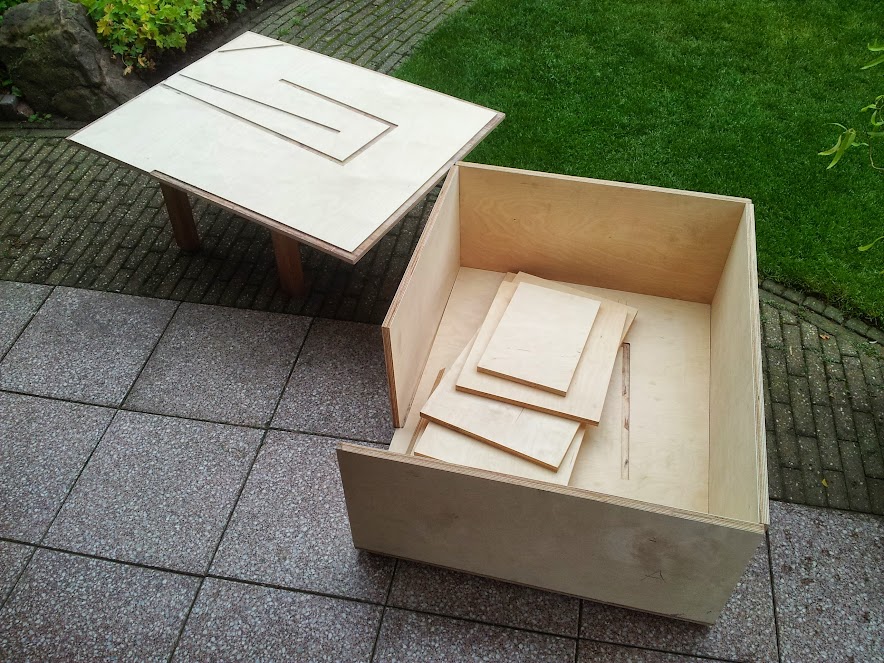
Despite some errors caused by my CNC-cutter, the sub fitted nicely.
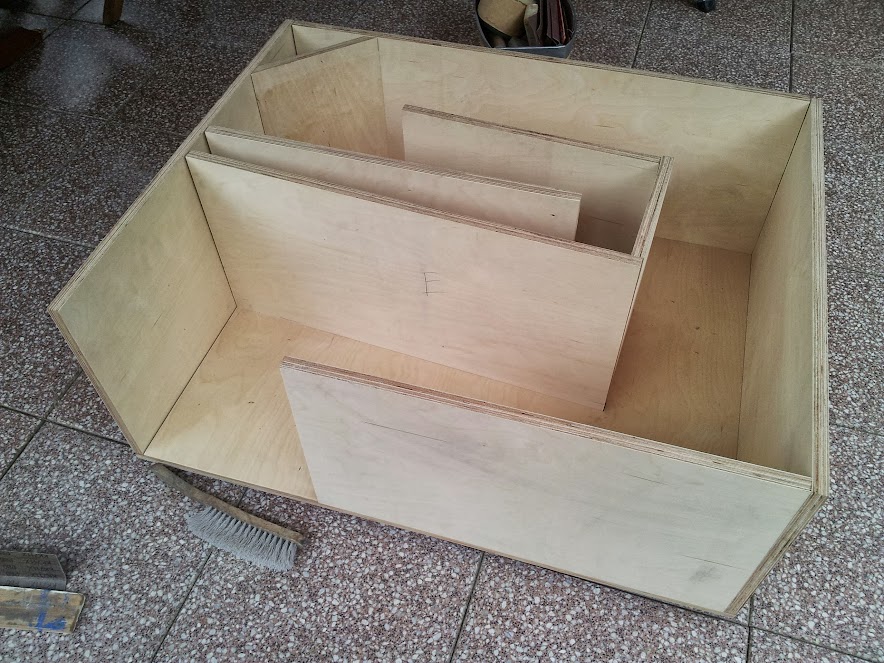
The rabbit seemed to agree
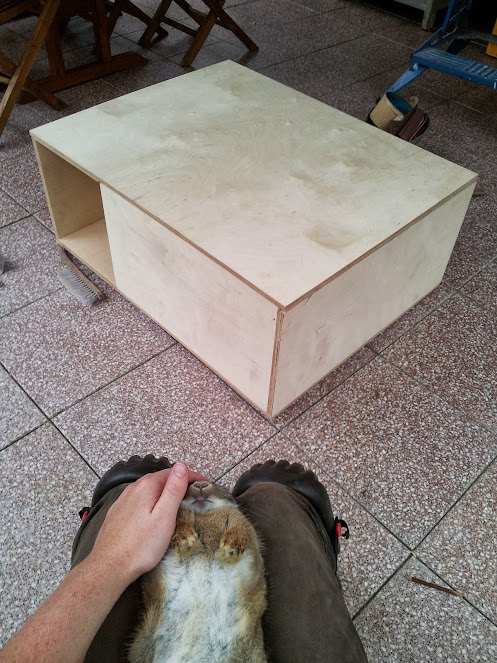
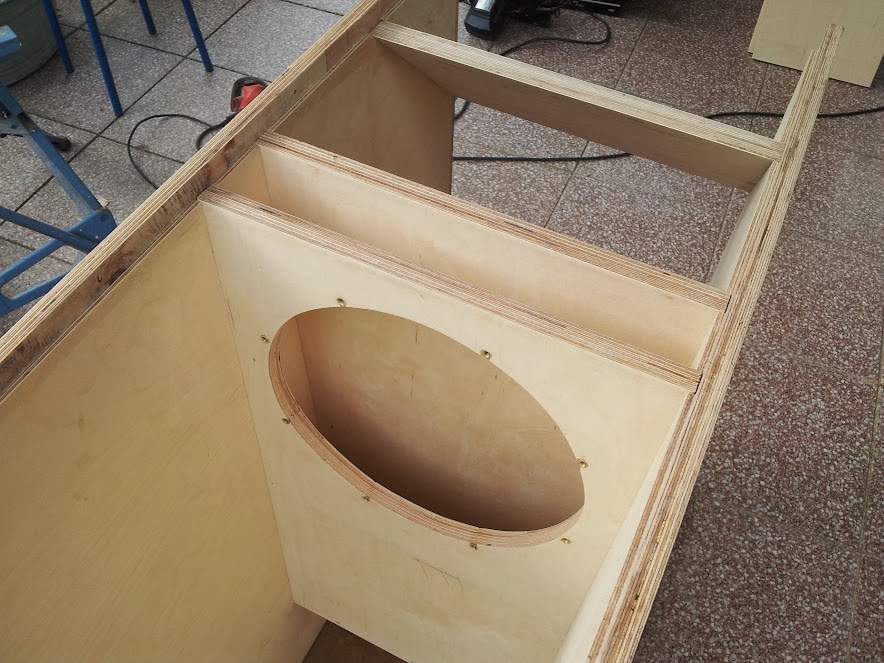
Here it is, all glue'ed up and ready for some serious sanding&filling
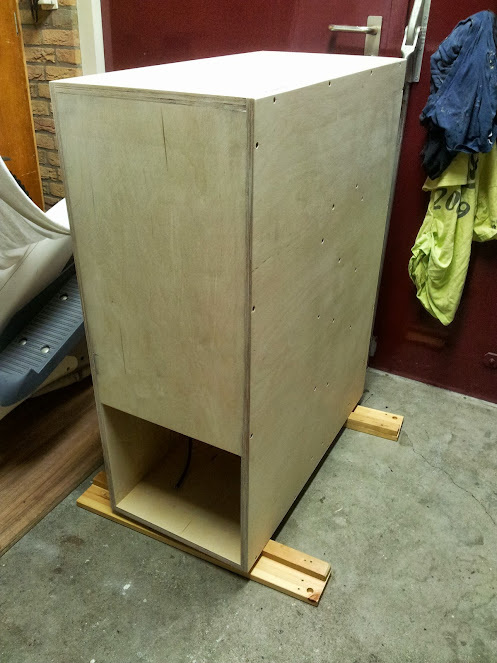
I decided to use the reflector panel, where normally the wheels are placed, as an connector panel.
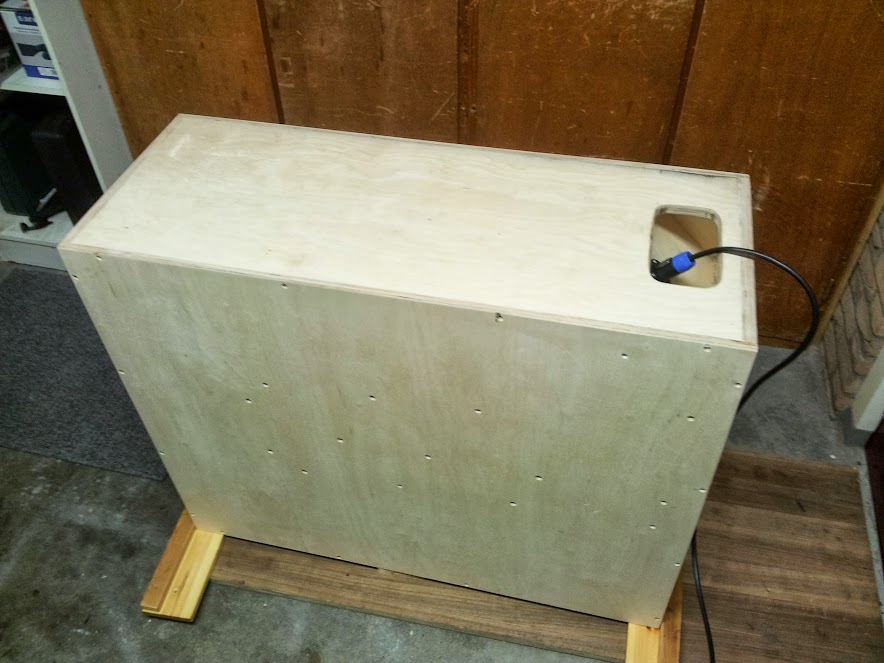
As you can see, it is recessed in to the cabinet, so placing it colsely against a wall is possible.
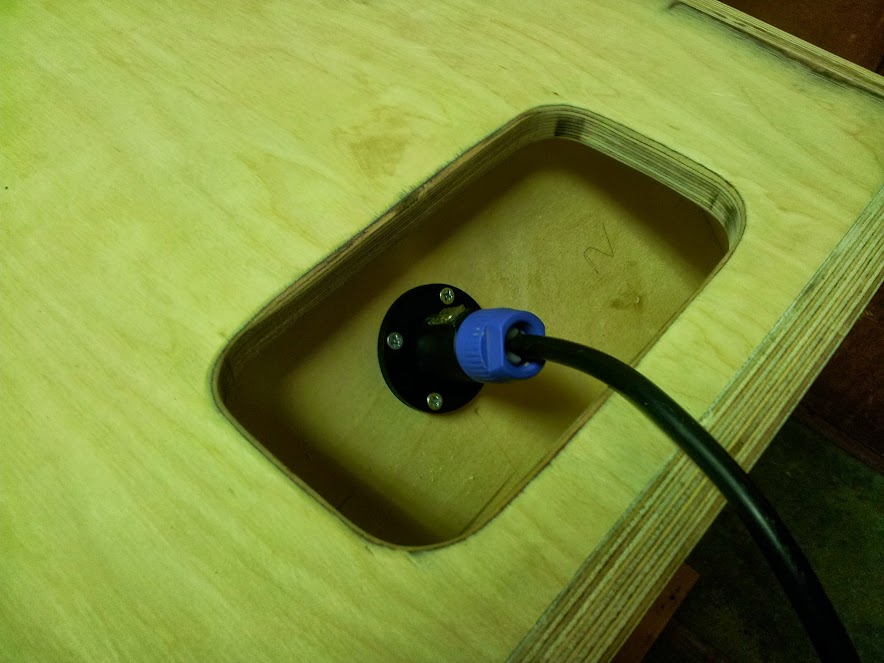
After the filler I applied a layer of primer (just to be sure...).
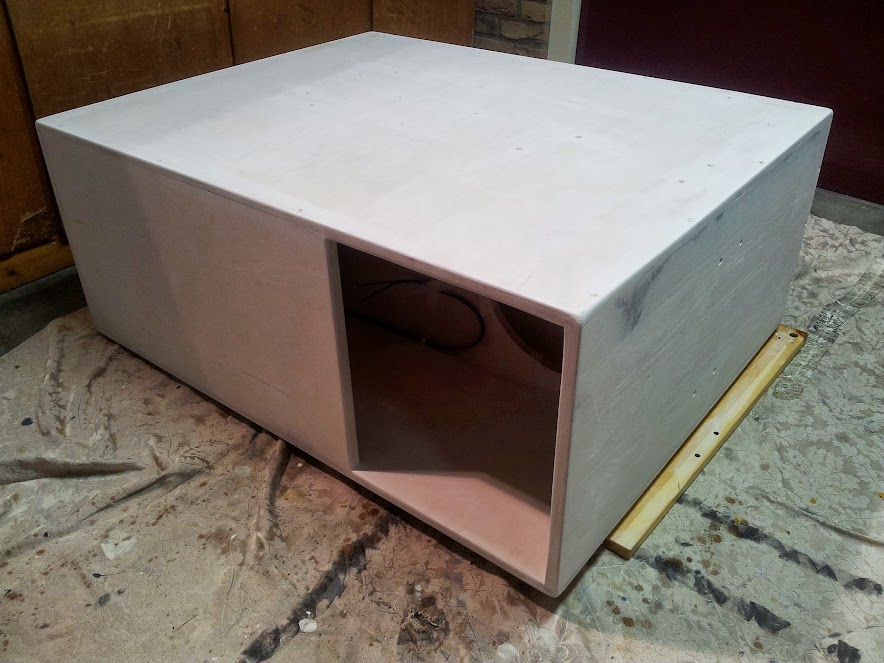
The paint itself is Trimite J136, instead of the more obvious choice Warnex. I was able to buy these for a real bargain price

I am really happy with the finish. I applied it with a structure roller (don't know if that is the correct name sorry).
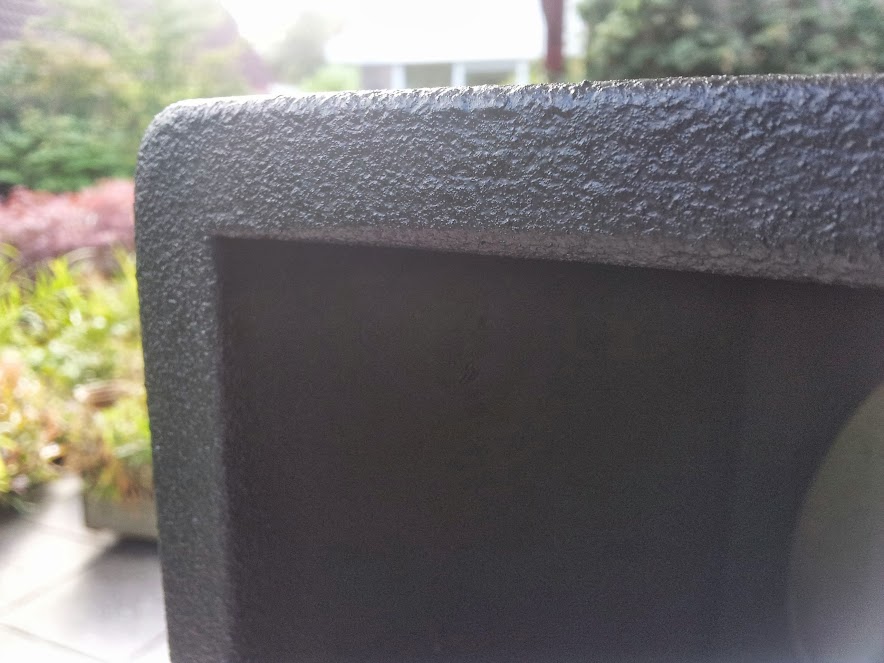
The connector panel again
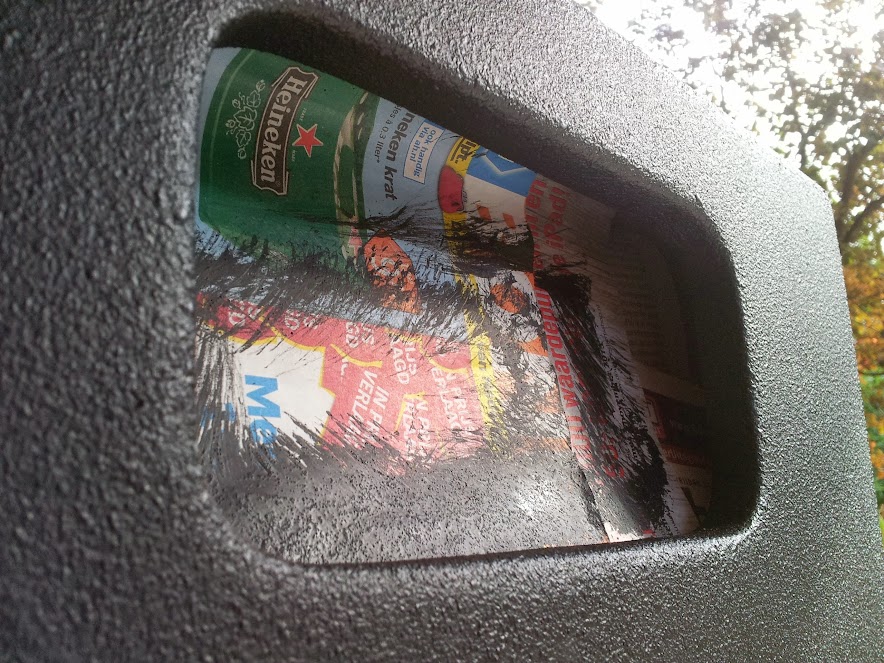
Ta-daa
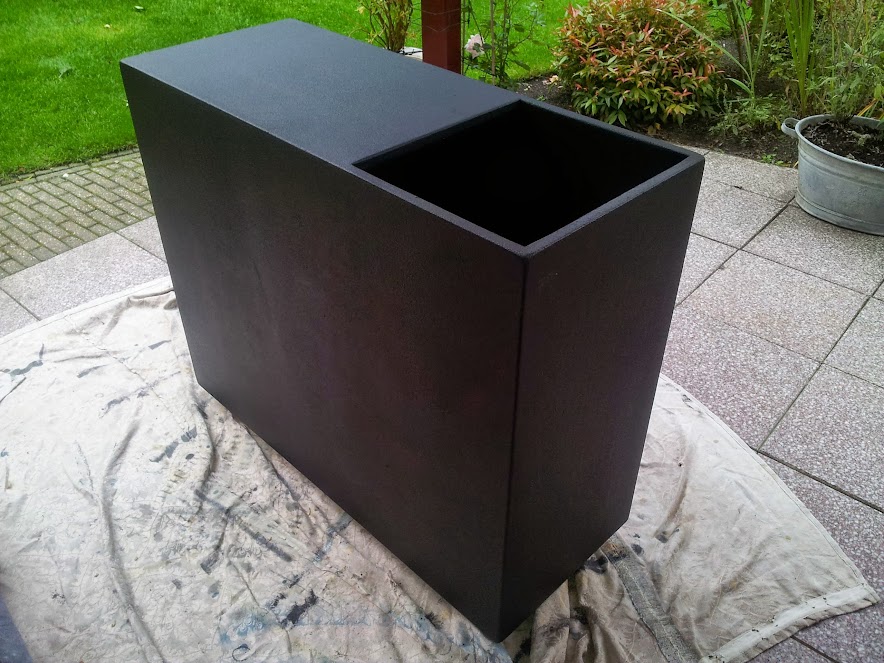
And ofcourse I added my own little touch to it...
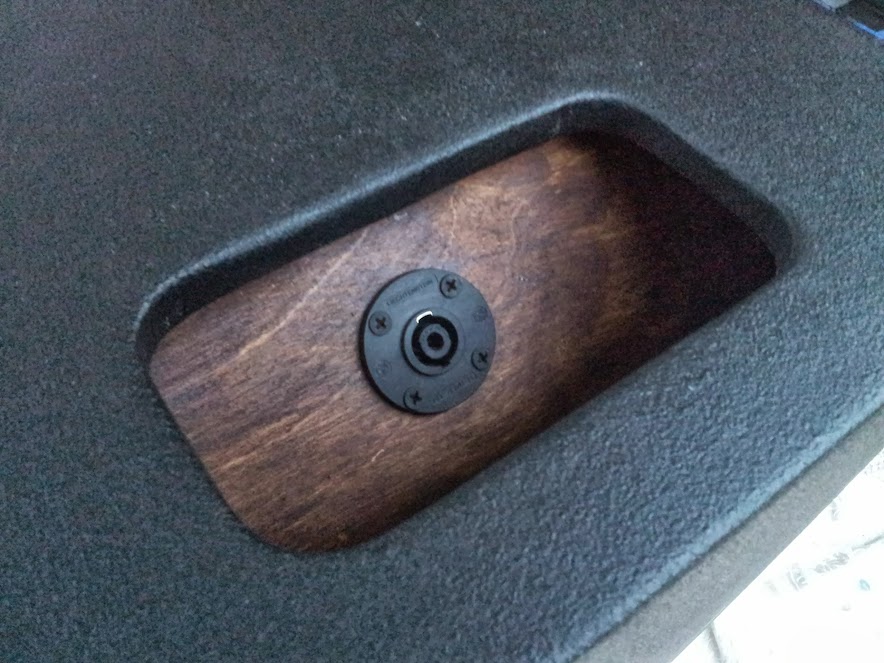
And here it is 'at home'
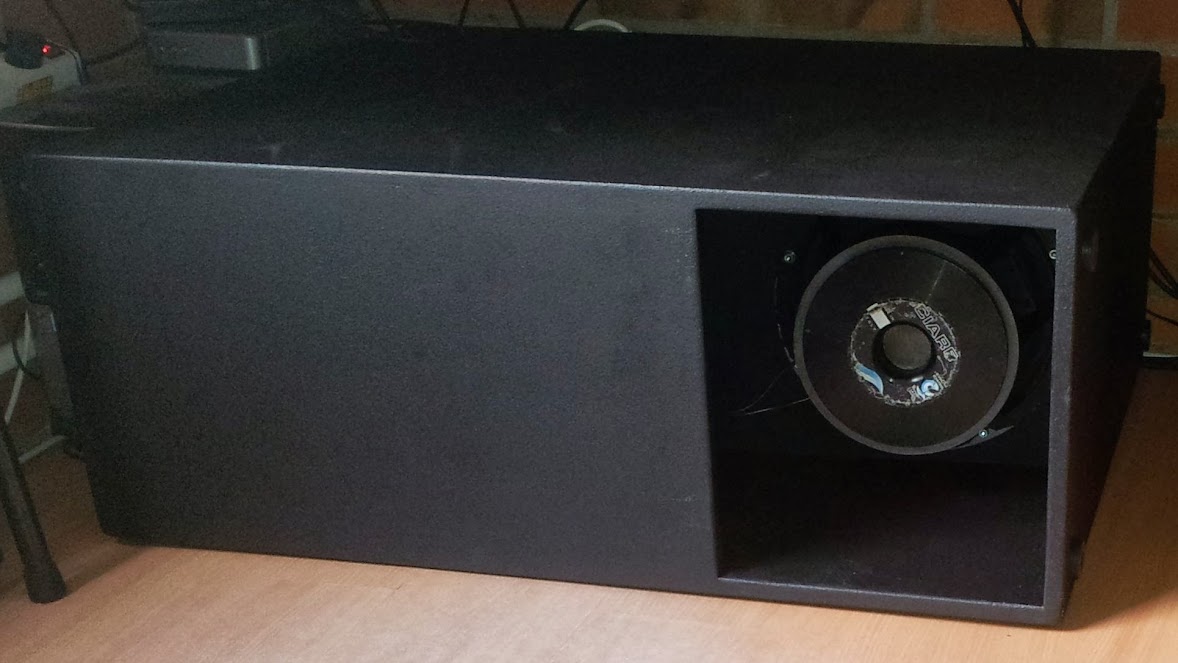
And yes the Ciare woofer is 'visually well used'.
I would like to thank you all for providing this amazing design. Especially m R g S r, thanks a lot for sharing!
Regarding the sound; I am currently listening, my judgement will follow later.
But what I know for sure is that the sub easily reaches sub-low frequencies of 30-35 Hz.
Greeting,
Teun (4AC)
Sorry for that. I certainly haven't forgotten you guys!
I was busy building the PAL12 for my Ciare 12.00SW woofer (check my last post with plots. It al began with this:

Despite some errors caused by my CNC-cutter, the sub fitted nicely.

The rabbit seemed to agree


Here it is, all glue'ed up and ready for some serious sanding&filling

I decided to use the reflector panel, where normally the wheels are placed, as an connector panel.

As you can see, it is recessed in to the cabinet, so placing it colsely against a wall is possible.

After the filler I applied a layer of primer (just to be sure...).

The paint itself is Trimite J136, instead of the more obvious choice Warnex. I was able to buy these for a real bargain price

I am really happy with the finish. I applied it with a structure roller (don't know if that is the correct name sorry).

The connector panel again

Ta-daa

And ofcourse I added my own little touch to it...

And here it is 'at home'

And yes the Ciare woofer is 'visually well used'.
I would like to thank you all for providing this amazing design. Especially m R g S r, thanks a lot for sharing!
Regarding the sound; I am currently listening, my judgement will follow later.
But what I know for sure is that the sub easily reaches sub-low frequencies of 30-35 Hz.
Greeting,
Teun (4AC)
First listening impressions are definitely positive. This thing really performs in the sub-low regions; I have not been able to find a song which included a lower note then this sub can handle. It easily pushes hard in the 30-35 Hz region, 30 Hz just as easy as 40- or 50 Hz. A pretty incredible experience at the SPL this sub can reach, to say the least.
I do notice that this design has some difficulties producing the more higher regions of bass, for example the ‘hmmm’ or the ‘humming’ sound, also known as kick-bass (the bass that really hits you). Very prominent in nineties electronical music. I suspect it being the 70-120 Hz region. Nevertheless this sub is very musical, you can hear the different pitches/levels/stages in the bass. For that matter this sub passed all my demands, the ‘one-note bass’ I often hear on the larger festivals (in NL) really irritates me. The the higher regions in bass are just less prominent with this design.
Concluding; I highly recommend this design to everyone that is looking for a relatively compact (it is NOT small) subwoofer that can easily reach 30 Hz, and is planning to use them either with a dedicated kickbass cabinet or a ‘hefty’ full range speaker.
Oh, by the way, I power this sub with a bridged QSC PLX1602. Mid high is provided by two Turbosound TXD-081’s, again powered by a PLX1602, but then obviously in stereo. The Turbosound speakers will soon be replaced by something that DOES produce the high-bass to accompany this sub. These MH speakers will be my next project. And when the second hand market provides me with a decent, lightweight and affordable 4-channel amplifier, the PLX’s will be replaced as well. Processing is handled by a XTA DP200. Does anyone have advice regarding the crossover slopes and delay? I am trying to practice using software alike SMAART and REW, but I lack the time to really learn what I am doing.
Thank you again,
Teun (4AC)
P.s. When first testing the shell before painting and so, I noticed an huge amount of port noise when pushing the sub hard. I know now that this was caused by the lack of processing (phone directly connected into amp LOL) during the testing, cause the port noise is absent now. I probably heard the Ciare exceeding its xmax and reaching xdamage… Whoops
All-in-one picture:
And yeah yeah, a decent 19" rack is also on the to-do list
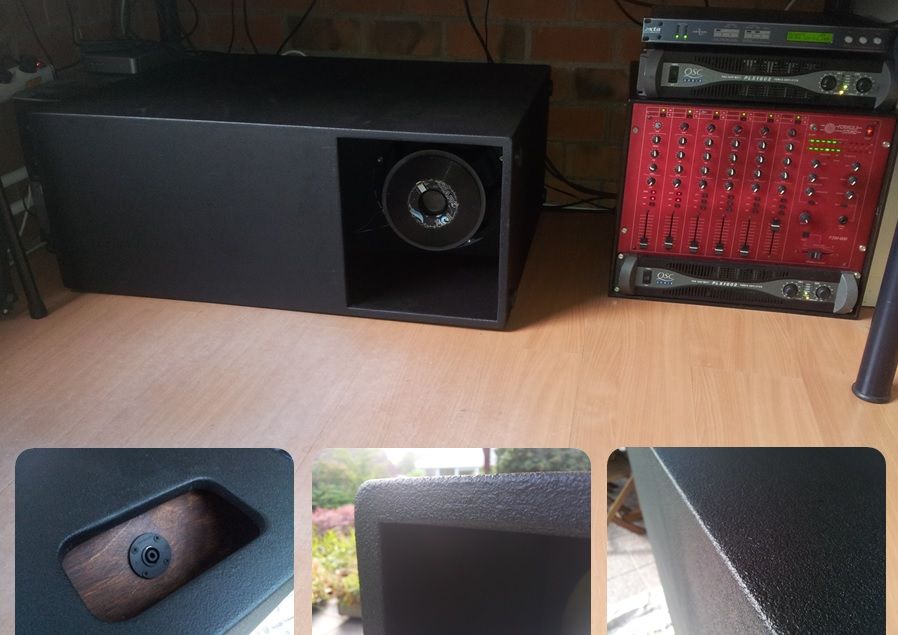
I do notice that this design has some difficulties producing the more higher regions of bass, for example the ‘hmmm’ or the ‘humming’ sound, also known as kick-bass (the bass that really hits you). Very prominent in nineties electronical music. I suspect it being the 70-120 Hz region. Nevertheless this sub is very musical, you can hear the different pitches/levels/stages in the bass. For that matter this sub passed all my demands, the ‘one-note bass’ I often hear on the larger festivals (in NL) really irritates me. The the higher regions in bass are just less prominent with this design.
Concluding; I highly recommend this design to everyone that is looking for a relatively compact (it is NOT small) subwoofer that can easily reach 30 Hz, and is planning to use them either with a dedicated kickbass cabinet or a ‘hefty’ full range speaker.
Oh, by the way, I power this sub with a bridged QSC PLX1602. Mid high is provided by two Turbosound TXD-081’s, again powered by a PLX1602, but then obviously in stereo. The Turbosound speakers will soon be replaced by something that DOES produce the high-bass to accompany this sub. These MH speakers will be my next project. And when the second hand market provides me with a decent, lightweight and affordable 4-channel amplifier, the PLX’s will be replaced as well. Processing is handled by a XTA DP200. Does anyone have advice regarding the crossover slopes and delay? I am trying to practice using software alike SMAART and REW, but I lack the time to really learn what I am doing.
Thank you again,
Teun (4AC)
P.s. When first testing the shell before painting and so, I noticed an huge amount of port noise when pushing the sub hard. I know now that this was caused by the lack of processing (phone directly connected into amp LOL) during the testing, cause the port noise is absent now. I probably heard the Ciare exceeding its xmax and reaching xdamage… Whoops
All-in-one picture:
And yeah yeah, a decent 19" rack is also on the to-do list

Last edited:
Teun,Processing is handled by a XTA DP200. Does anyone have advice regarding the crossover slopes and delay? I am trying to practice using software alike SMAART and REW, but I lack the time to really learn what I am doing.
With only a single 8 above, you probably will want around a 30-120 Hz BW 24, a little high for the PAL, but will relieve some of the "grunt" from the Turbos.
Start with around 9ms delay on the top cabinets, positive voltage should move the TH cone forward in to the throat, +to + is "normal", the same as it is on the top cabinets. Verify polarity through your speaker cables with a 9v battery to see the cones move.
Set the top cabinet and the TH on the ground outdoors next to each other, mic 2 meters from the center between the cabinets, laying on the ground.
If indoors, move the mic to a meter or so to avoid room problems.
Adjust level for each individually to be the same SPL at the crossover point.
Run both up, the level should come up around 3-6 dB at the crossover point.
Flip polarity of the sub, there should now be a fairly deep "hole" visible on both the magnitude and phase response of Smaart.
Adjust the delay up and down from 9ms, the delay is correct when the null is deepest. Typically you can see about a 1/6 th octave dip of around 18 dB.
Flip polarity of the sub back to normal, and adjust PEQ for flat response, or a "haystack" bottom if you prefer.
The PEQ will probably mainly need to reduce the broad peak around 95 Hz a few dB, and the first narrow band out of band peaks around 160-200 Hz by 4-6 dB.
Have fun!
Last edited:
I really like the idea of 12" compact extended low frequency sub. Pending finding a decent aus available driver I might build some. Would it be worth it trying to find a high power driver?
Are they light enough to move around or even carry in a pinch with just one person?
Come to think of it has anyone tried to use a larger driver sideways to make a smaller box with lower freq output, obviously with a bit of loss vs full size cab?
Are they light enough to move around or even carry in a pinch with just one person?
Come to think of it has anyone tried to use a larger driver sideways to make a smaller box with lower freq output, obviously with a bit of loss vs full size cab?
I just found out I can get B&C 12" drivers shipped to Aus for US $292.64 from china (manufacturer?) also a seamail service may make it even less. This opens up a lot of opportunities, especially that more of the B&C range is available (yet not explicitly stated as b&c brand).
12TBX100 8 loudspeaker-in Speakers from Consumer Electronics on Aliexpress.com
12TBX100 8 loudspeaker-in Speakers from Consumer Electronics on Aliexpress.com
- Home
- Loudspeakers
- Subwoofers
- $325 Lab 12 based PA tapped horn ~ 35Hz extension
